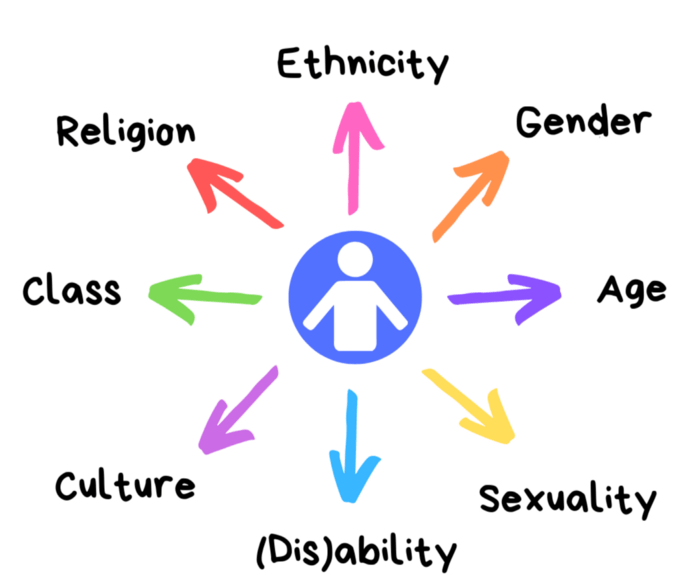
Can We Avoid Burnout?
We often use the term “burnout” as a vague label for an exhausting day or week of hard work, but actual burnout is more than

However, it is important to recognize in all identity-diverse groups, there are no one-size-fits-all approaches to understanding or categorizing employees.
Intersectionality, a term coined by Kimberlé Crenshaw, explains how many types of social justice issues and barriers can impact individuals simultaneously.
Intersectionality extends to all protected characteristics, including:
The various intersecting identities a person has may magnify their experiences of marginalization and discrimination. Looking at the bigger picture of your employee’s identity will help you recognize to what extent they may be dealing with the issues they face.
The concept of intersectionality was originally developed to “bring to light dynamics within discrimination law that weren’t being appreciated by the courts”.
Crenshaw explains further:
“In particular, courts seem to think that race discrimination was what happened to all Black people across gender and sex discrimination was what happened to all women, and if that is your framework, of course, what happens to Black women and other women of color is going to be difficult to see.”
Although the term intersectionality was first established decades ago, many of us are just now beginning to appreciate how intersectionality operates. This framework will continue to play a key role in broadening our understanding of what diverse workplace cultures really entail.
Want to keep learning? Listen to the first episode of Just One Q with Dr. Melissa Horne, a Learning Snippets podcast and sign up for our weekly Sunday Snippets newsletter to stay up-to-date on best practices for diversity, inclusion and equity in the workplace.

We often use the term “burnout” as a vague label for an exhausting day or week of hard work, but actual burnout is more than

At Dialectic, we think a lot about DEI, soft skills, and leadership training that makes organizations more inclusive and human-friendly. When we team up with

Ageism commonly affects women over 40 in the workplace. In spite of their tremendous wisdom and experience, women over 40 may be passed over for
Dialectic helps organizations improve the way people work, learn, and collaborate through person-centred design and the latest in social science.

Does your team struggle with soft skills?
Use our app or upload Snippets to your LMS to build better habits in minutes with scenario-based microlearning.
Sign up for our weekly roundup of the latest on DEI, leadership, collaboration, and learning science.
© 2024 Dialectic. All rights reserved. | Contact Us | Privacy Policy | Terms of Use | AODA Statement
See how easy it is to activate soft skills in your organization. Soft skills training on 3 key topics: DEI, Leadership, and Collaboration.